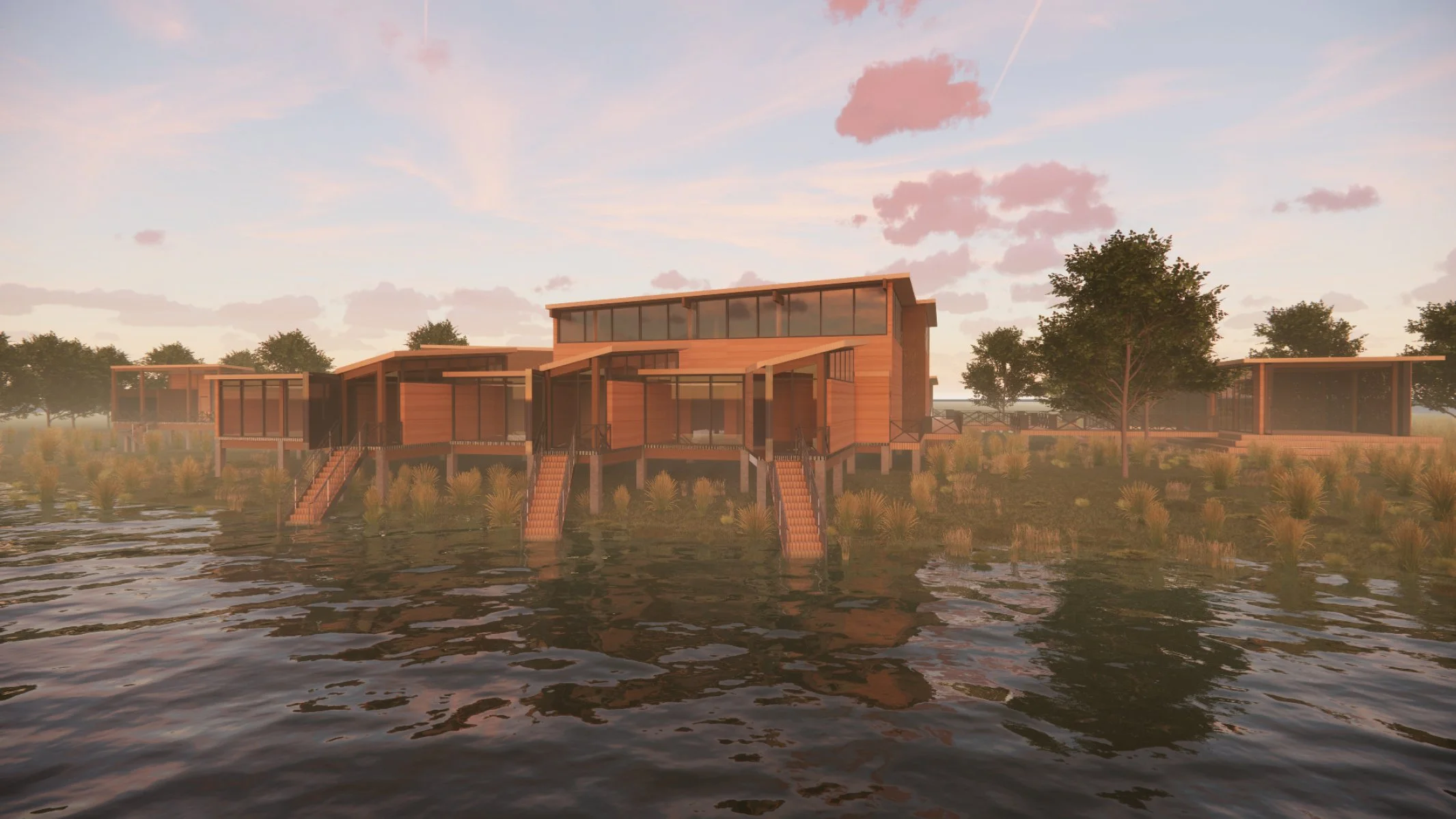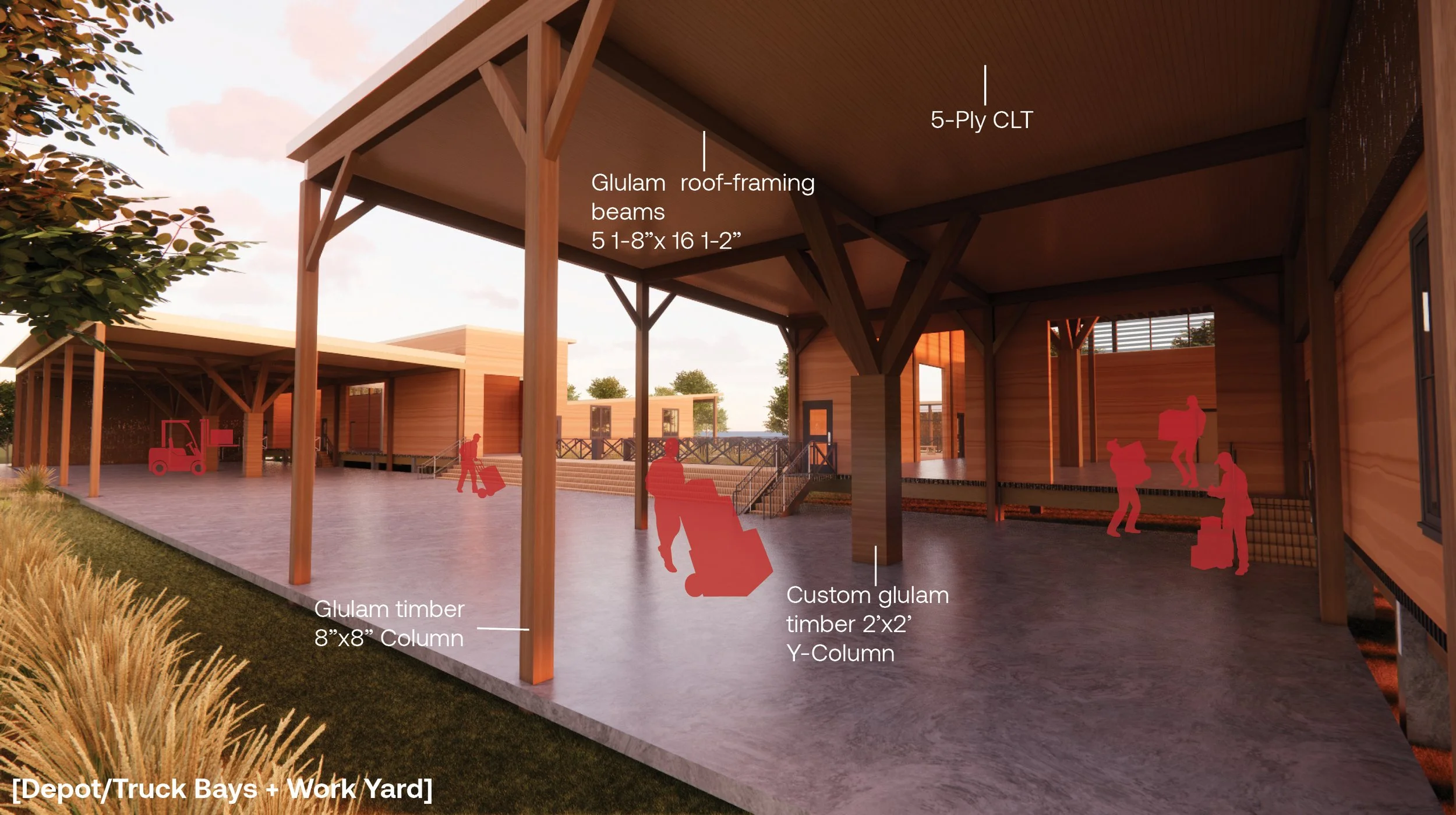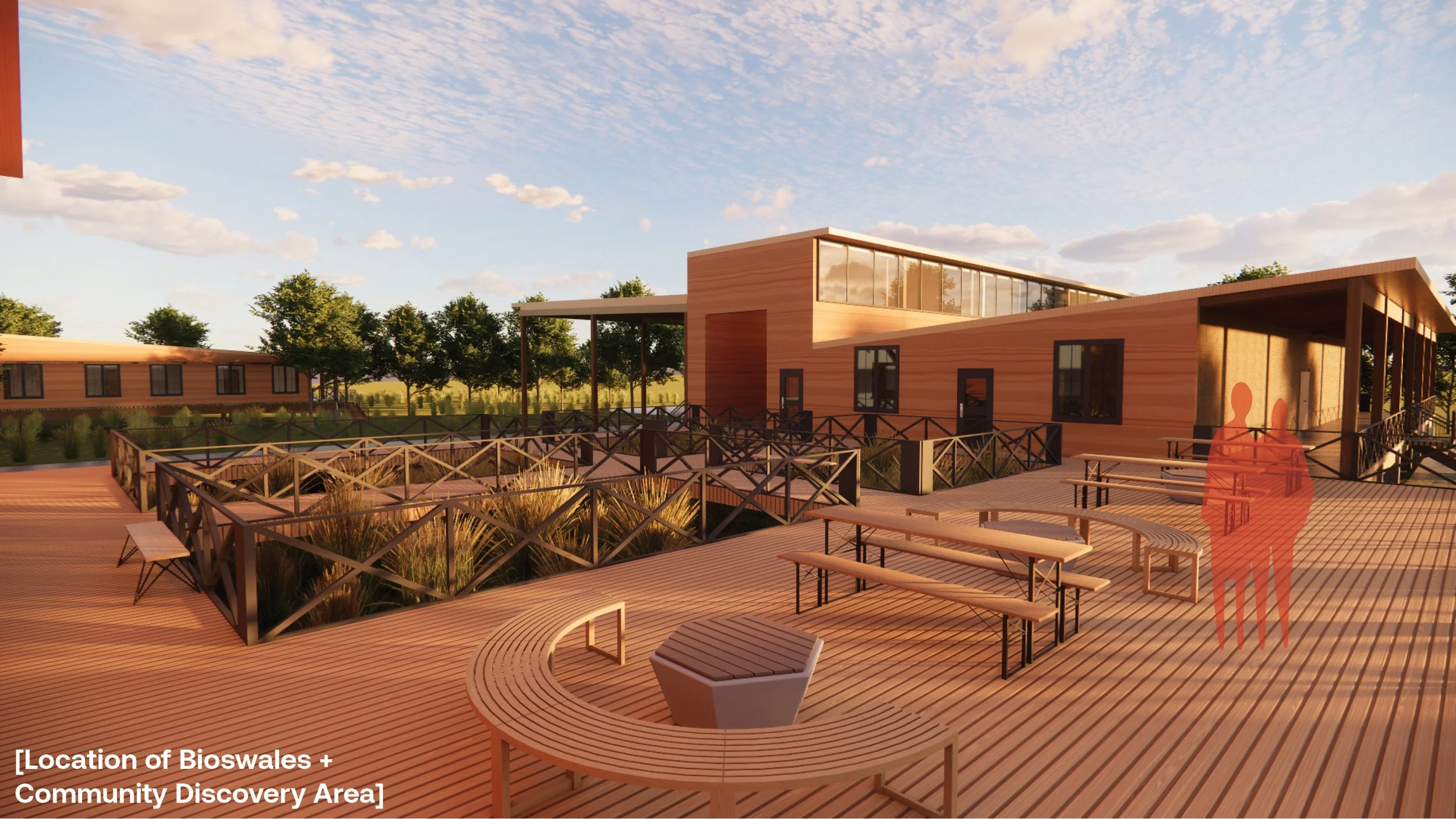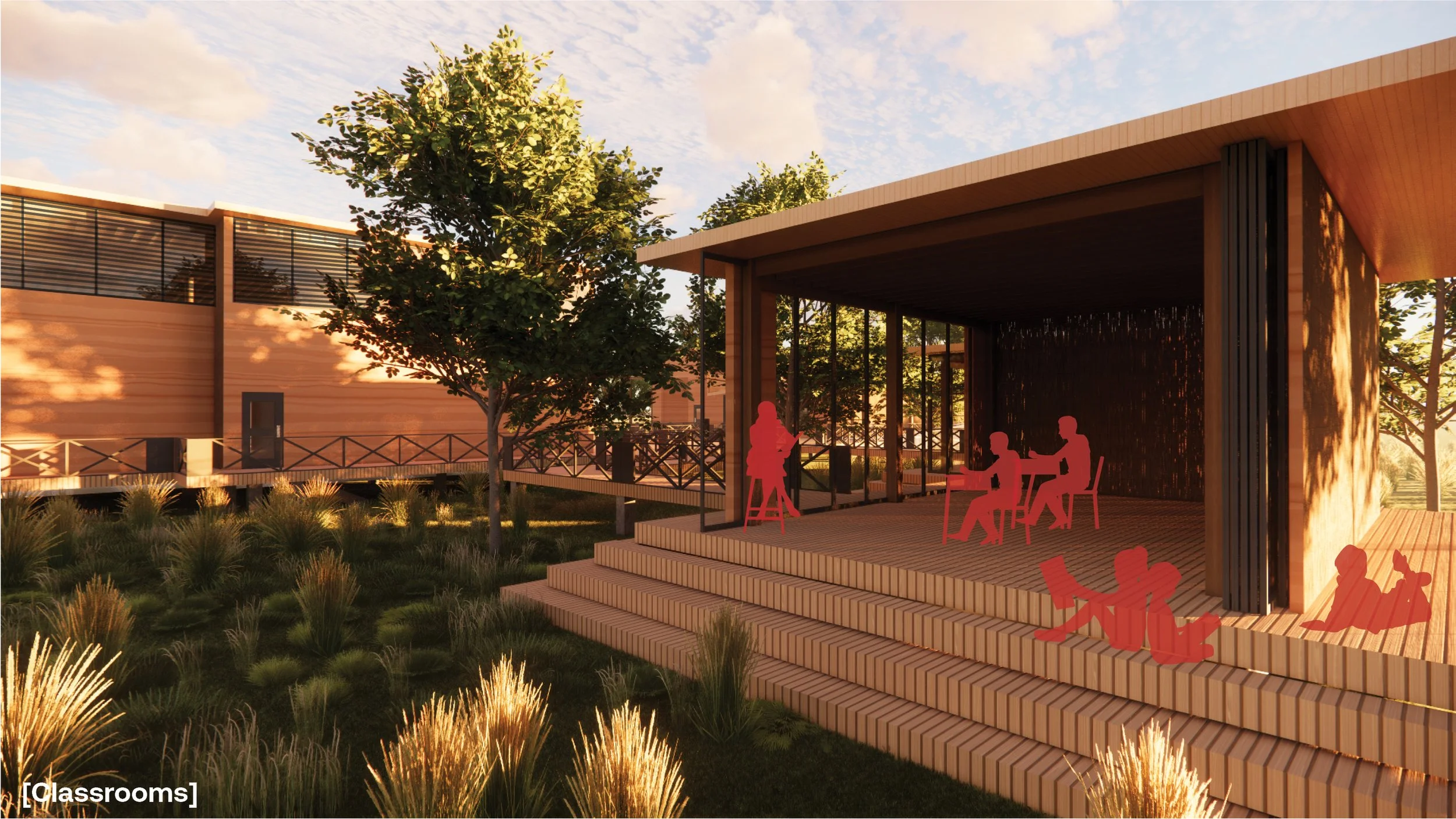
Project 2 — The Baru Center
This project was developed during my first-year studio at SCAD as part of a competition-focused course. The studio was framed around submissions for the AIA COTE Top Ten for Students and the Lyceum Fellowship, with an emphasis on sustainable, community-oriented design.
Rooted in environmental responsibility and social impact, the project explored how design can serve as a tool for education, empowerment, and regeneration. The proposal utilized locally sourced and recycled materials, incorporated net-zero energy strategies, and prioritized self-sufficiency at both the building and community scale.
The result was The Baru Center — a fully net-zero recycling and education center dedicated to fostering community engagement across generations. It serves as a space for learning, collaboration, and action around sustainability, offering a platform for people and the environment to benefit one another through mutual exchange and shared stewardship.
Resources
The project begins by harvesting invasive Phragmites reeds directly from the site, a process that not only helps restore the local marsh ecosystem but also repurposes an abundant natural material for construction. Once collected, the reeds are bundled and tightly woven into thatch panels, taking advantage of their inherent properties — including natural ventilation, water resistance, and thermal performance — to support passive heating and cooling strategies. At the end of the building’s lifecycle, the reeds can be responsibly deconstructed and burned, with the resulting ash returned to the soil. This final step aids in carbon sequestration and reinforces the marsh’s natural regenerative cycle, closing the loop between built form and ecological restoration
Glulam timber used as the structural system for its 60% lower carbon footprint. During its growth, wood accumulates carbon dioxide (CO₂) from the atmosphere. When used in glulam construction, this carbon remains sequestered within the structure for years
Design for Deconstruction + Environmental Accommodation
Bio-haven Island
How does it help the ecosystem?
A bio island is a floating garden designed to naturally purify water and enhance habitats. Comprised of a fibrous matrix that is constructed from recycled materials, it acts as a concentrated habitat for native wetland plants. The matrix generates bio-films, serving as an efficient filtration system that removes sediments and nutrients like nitrogen and phosphorus from water. Bacteria and wetland plants within the matrix play a vital role in consuming these elements to support their growth.
Benefits: improved water quality, life below water, design for cities, shoreline protection + coastal restoration
Bio-Dome
How does it help the water?
A bio dome is a wastewater compliance system that harnesses naturally occurring bio films to expedite the removal of chemicals and organic materials. Resembling the natural processes in wetlands, these concentrically nested domes are situated at the bottom of wastewater lagoons, receiving air from below. Coated with bio films, they provide an extra 2800 square feet for bio films to thrive, this process significantly boosts the efficiency of contaminant reduction, including ammonia, nitrogen, and other chemicals that harm marsh life.
Benefits: responsible production and consumption, life below water, cost reduction, and improved wastewater treatment.
Ecosystem Synthesis Section
Resources Synthesis Section
Additional Renders
Building + Wall Section Detail











